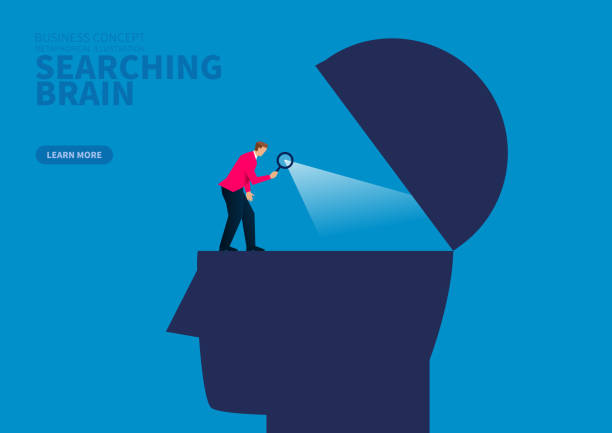The Underrated Power of Quality Thinking: How Our Thoughts Can Shape Our Lives
Have you ever heard the saying, "You are what you think"? Well, it's not just a catchy phrase, it's actually true. Our thoughts have the power to shape our lives, our behaviors, and our experiences.
Many people are curious about the secrets of success and happiness, and how they can improve their own lives. But what if I told you that there is no secret, no magic formula, no shortcut to success and happiness? What if I told you that the only thing that separates the winners from the losers, the leaders from the followers, the happy from the unhappy, is the quality of their thinking?
The quality of your thinking determines the quality of your life. It affects how you perceive yourself and others, how you communicate and relate, how you learn and grow, how you create and innovate, how you cope and adapt, how you plan and execute, how you enjoy and appreciate. In short, it affects everything. Stick around, because we're about to explore the underrated power of "quality thinking" and how it can help you achieve your goals and live a fulfilling life.
Understanding the Art of Thinking
Thinking is the ultimate cognitive activity that allows us to consciously use our brains to make sense of the world around us. It's an essential process that lets us decide how to respond to situations and imagine possible futures. However, most of us tend to overlook the potential of our brains and take the process of thinking for granted.
It's easy to get lost in the mundane tasks of daily life and forget the incredible capability of our minds. But the truth is that quality thinking can transform our lives in unimaginable ways.
What is Quality Thinking?
Quality thinking is not a skill or a talent that you are born with or without. It is not a fixed trait that you can’t change or improve. It is not about having a high IQ or a lot of degrees. It is not about being optimistic or pessimistic. It is not a gift that only a few lucky ones possess. Quality thinking is a habit that anyone can develop and practice. It is about being curious and open-minded. It is a way of using your mind that leads to better outcomes and experiences. In other words, Quality thinking is the ability to use your mind in a productive and efficient way to achieve your desired outcomes. Quality thinking involves different aspects of thinking, such as depth, creativity, flexibility, criticality, and agility. These aspects can help you evaluate information, construct new concepts, analyze problems, and generate solutions.
In other words, Quality thinking is the ability to use your mind in a productive and efficient way to achieve your desired outcomes. Quality thinking involves different aspects of thinking, such as depth, creativity, flexibility, criticality, and agility. These aspects can help you evaluate information, construct new concepts, analyze problems, and generate solutions.
Types of Thinking
Quality thinking is not a single type of thinking. It is a combination of different types of thinking that complement and enhance each other. Some of the most common types of thinking are:
- Analytical thinking: This is the type of thinking that involves breaking down complex information or problems into smaller and simpler parts. It helps you identify the causes and effects, the pros and cons, the strengths and weaknesses, and the similarities and differences of any situation. It helps you organize and structure your thoughts and arguments in a clear and logical way.
- Creative thinking: This is the type of thinking that involves generating new and original ideas or solutions. It helps you think outside the box, challenge the status quo, and find novel ways to overcome challenges or create value. It helps you use your imagination and intuition to connect the dots and see the bigger picture.

- Critical thinking: This is the type of thinking that involves evaluating and judging information or arguments. It helps you avoid errors, fallacies, and biases. It helps you follow evidence and reasoning to make informed decisions and conclusions. It helps you examine assumptions and implications, seek feedback and verification, and admit ignorance and uncertainty.
- Strategic thinking: This is the type of thinking that involves planning and executing actions to achieve goals or objectives. It helps you identify opportunities and threats, set priorities and milestones, allocate resources and time, and monitor progress and performance. It helps you anticipate and adapt to changing circumstances, learn from mistakes and feedback, and optimize results and outcomes.
- Systemic thinking: This is the type of thinking that involves understanding how things work as a whole. It helps you recognize patterns and relationships, causes and consequences, feedback loops, and leverage points. It helps you see how different parts of a system affect each other, how a system interacts with its environment, and how a system evolves over time.

- Divergent thinking: This is the ability to generate many different ideas or solutions for a given problem or situation. Divergent thinking can help us explore various possibilities and alternatives and avoid getting stuck in one way of thinking.
- Convergent thinking: This is the ability to narrow down the ideas or solutions generated by divergent thinking and select the best one for the given problem or situation. Convergent thinking can help us evaluate the pros and cons of each option and make informed decisions.
- Lateral thinking: This is the ability to think outside the box and find new ways of looking at a problem or situation. Lateral thinking can help us overcome mental blocks, challenge assumptions and discover novel solutions.
All these types of thinking are useful for different purposes or situations. The key is to be aware of our own thinking patterns and preferences and to use the appropriate type of thinking for the task at hand.
Why Quality Thinking Matters
The answer is simple: quality thinking leads to quality living.
- Learn faster and better: Quality thinking can help you absorb and process new information more effectively and retain it longer. It can also help you apply what you learn to different situations and contexts.
- Solve problems and make decisions: Quality thinking can help you identify and define problems, explore various options and alternatives, weigh the pros and cons of each option, and select the best solution for the given problem. It can also help you anticipate and avoid potential pitfalls and risks.
- Achieve life goals: Quality thinking can help you achieve your personal and professional goals faster and easier. By thinking clearly and critically, you can make better decisions and solve problems more effectively. By thinking creatively and innovatively, you can generate more ideas and opportunities. By thinking realistically and optimistically, you can overcome obstacles and challenges.
- Build better relationships: Quality thinking can help you improve your relationships with yourself and others. By thinking positively and constructively, you can boost your self-esteem and confidence. By thinking rationally and logically, you can avoid emotional traps and biases. By thinking empathetically and respectfully, you can understand different perspectives and communicate better.
- Innovate and create: Quality thinking can help you use your imagination, originality, and innovation to produce something new or valuable. It can also help you express yourself, solve problems in unique ways and create art or products that inspire others.
- Communicate and collaborate: Quality thinking can help you communicate your thoughts clearly and persuasively to others. It can also help you listen actively and empathetically to understand different perspectives and learn from others.
Quality thinking can benefit you in many ways. It can also make you more adaptable and resilient in a changing and complex world.
How Great Achievers Used Their “Thinking” Ability
Thinking has helped great achievers make incredible discoveries and push the boundaries of what is possible. Let's take a look at some famous thinkers and how they used their thinking ability to change the world.
Albert Einstein
Albert Einstein went about his work in unique ways. From visualization to daydreaming and even a dash of musical inspiration, Einstein’s creative insights and philosophical vantage points help guide the work we tackle today. Using simple thought experiments, Einstein was able to understand that time and space are both shaped by matter — the basis for the theory of general relativity. It’s astonishing that this thought experiment changed everything we thought we knew about the universe.
Leonardo Da Vinci
Leonardo, who is widely regarded as one of the most brilliant minds of all time, placed great emphasis on the power of vision and visualization. He believed that the eye was the noblest of the senses and of paramount importance. Because of it, the soul is content in its human prison, and without it, this human prison is its torment. He emphasized ways to visualize knowledge and he pioneered anatomical illustration.
Stephen Hawking
Hawking began serious work on his breakthrough calculation a decade after he was diagnosed with ALS. By this point, he was unable to read books on his own or write down equations. Hawking had friends “turn the pages of quantum theory textbooks as [he] sat motionless staring at them for months.” Unable to write, he then attacked the problem through mental “pictures and diagrams,” seeking visual intuition. Hawking revealed the mysteries of the Blackhole with his powerful thinking.
Steve Jobs
Steve Jobs was a thinker who combined different types of thinking to create products and services that changed the world. He was curious and open-minded, always looking for new information and ideas. He was critical and rational, always testing and verifying his assumptions and claims. He was creative and innovative, always finding novel ways to solve problems and create value. He was strategic and visionary, always planning and executing actions to achieve his goals and objectives. He was systemic and holistic, always understanding how things work as a whole and how to improve the user experience. He was a quality thinker who inspired millions of people with his passion and excellence.
“Again, you can’t connect the dots looking forward; you can only connect them looking backwards. So, you have to trust that the dots will somehow connect in your future. You have to trust in something — your gut, destiny, life, karma, whatever. This approach has never let me down, and it has made all the difference in my life” - Steve Jobs
Incorporating Quality Thinking into Your Daily Life
Now that we understand what quality thinking is and why it's so important, let's discuss how you can incorporate it into your daily life. Here are some tips that will help.
- Watch Your Thoughts: Our thoughts are the beginning of everything we do - or don't do. Therefore, it is important to be mindful of the thoughts we entertain. It's easy to get caught up in negative thoughts, which can lead to anxiety, depression, and other mental health issues. One way to manage your thoughts is through mindfulness practices. Mindfulness involves paying attention to the present moment without judgment. This can be achieved through meditation, deep breathing exercises, or simply taking a few moments each day to focus on your surroundings.
- Discover New Information: The amount of data you're feeding your brain right now will connect the dots in the future. Hence, it's essential to gather and discover new information that can spark your imagination and inspire quality thinking.
- Journal Your Thoughts: Journaling is an excellent way to connect your thoughts and create new ideas from them. It lets you organize your thoughts, reflect on your emotions, and helps you discover patterns that may not be visible otherwise.
- Self-Talk: Talking to yourself may seem odd at first, but it's an effective way to clarify your thoughts and gain a better understanding of your emotions and motivations. When you talk to yourself, you can examine your assumptions, question your beliefs, and explore different perspectives.
- Take a walk: Walking is one of the simplest yet most effective ways to improve your mental clarity and critical thinking skills. Studies show that regular walking can boost your creativity, reduce stress, and improve your overall cognitive function. So, take a stroll in the park or walk around your neighborhood and let your mind wander.
My journey.
I want to end this article by sharing with you my personal journey of quality thinking. I hope that by telling you my story, I can inspire you to start or continue your own journey of quality thinking.
I was not always a quality thinker. In fact, for most of my life, I was a poor thinker. I was lazy and passive. I accepted whatever information was given to me without questioning or verifying it. I followed whatever opinions or beliefs were popular or convenient without analyzing or evaluating them. I repeated whatever information or arguments were memorized or rehearsed without synthesizing or applying them.
I focused mostly on my problems and difficulties in life without recognizing or appreciating the opportunities and solutions. I stuck to my comfort zone and routine without exploring or experimenting with new ideas or possibilities. I resisted and rejected change and feedback without adapting or improving. I closed myself off from different perspectives and experiences without understanding or empathizing with them.
As a result of my poor thinking, I suffered a lot of consequences. I wasted a lot of time and energy on trivial and irrelevant matters. I missed a lot of opportunities and potential in life. I had a lot of conflicts and misunderstandings with others. I felt a lot of frustration and dissatisfaction with myself.
But then something happened that changed everything. Something that made me realize the importance and power of quality thinking. Something that made me decide to change my thinking and change my life.
That something was a book.
The book was called “Thinking, Fast and Slow” by Daniel Kahneman. It is a book about how we think, why we think the way we do, and how we can think better. This book opened my eyes to the wonders and pitfalls of human cognition. It was a book that challenged me to question my assumptions, examine my biases, and improve my reasoning. It sparked my curiosity, ignited my creativity, and inspired my optimism.
My quality thinking journey started with this book.
Since then, I have been reading more books and listening to podcasts on quality thinking. I keep trying different strategies and techniques to improve my quality of thinking. I practice quality thinking every day, in every situation, with every person.
And the results have been amazing.
I have achieved my personal and professional goals faster and easier, made better decisions, and generate more ideas and opportunities. I have been able to boost my self-esteem and confidence. I have been able to avoid emotional traps and biases. I have been able to understand different perspectives and communicate better.
I now have the ability to cope with stress, adversity, and change. I am able to pursue my goals and dreams while also enjoying and appreciating life.
Quality thinking has changed my life for the better. And it can change yours too.
Final Words
Thinking is a powerful tool that we all possess. However, it is often underrated and underutilized. By taking the time to reflect on our thoughts, gather and discover information, and practice rational thinking, we can unlock our full potential.
So, the next time you find yourself lost in thought, don't dismiss it as a waste of time. Instead, embrace the power of quality thinking and see where it takes you.















































